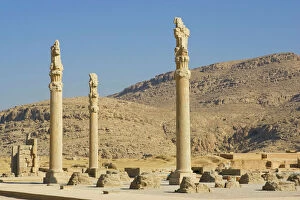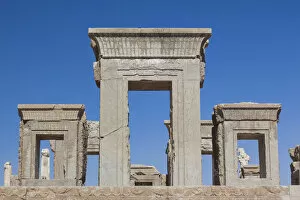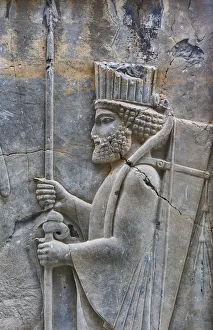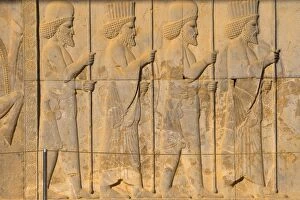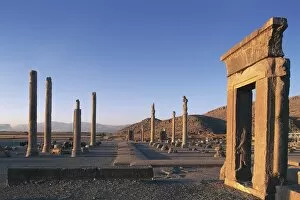Apadana Palace Collection
Step into the grandeur of ancient Persia at the Apadana Palace in Persepolis, the ceremonial capital of the Achaemenid Empire
All Professionally Made to Order for Quick Shipping
Step into the grandeur of ancient Persia at the Apadana Palace in Persepolis, the ceremonial capital of the Achaemenid Empire. This magnificent structure, begun by Darius the Great and completed by his son Xerxes I 30 years later in 480 BC, served as a symbol of power and prestige for The King of Kings. As you ascend the staircase adorned with intricate reliefs, you can't help but be awestruck by the artistry and craftsmanship on display. These reliefs depict scenes from daily life, religious ceremonies, and royal processions - providing a glimpse into the rich cultural tapestry that once thrived within these walls. Perched atop a hill in Fars province, this architectural marvel stands as a testament to Persian ingenuity and ambition. It was here that kings held official audiences and welcomed foreign dignitaries from far-reaching corners of their empire. The Apadana Palace is just one part of Persepolis, an ancient city dating back to the 6th century BC. Its ruins offer visitors a chance to explore not only this majestic palace but also other structures that once made up this thriving metropolis. Immerse yourself in history as you wander through time-worn corridors and marvel at remnants of an empire long gone. The Apadana Palace invites you to step back into an era when Persia reigned supreme - where every relief tells a story etched forever onto its stone walls.

